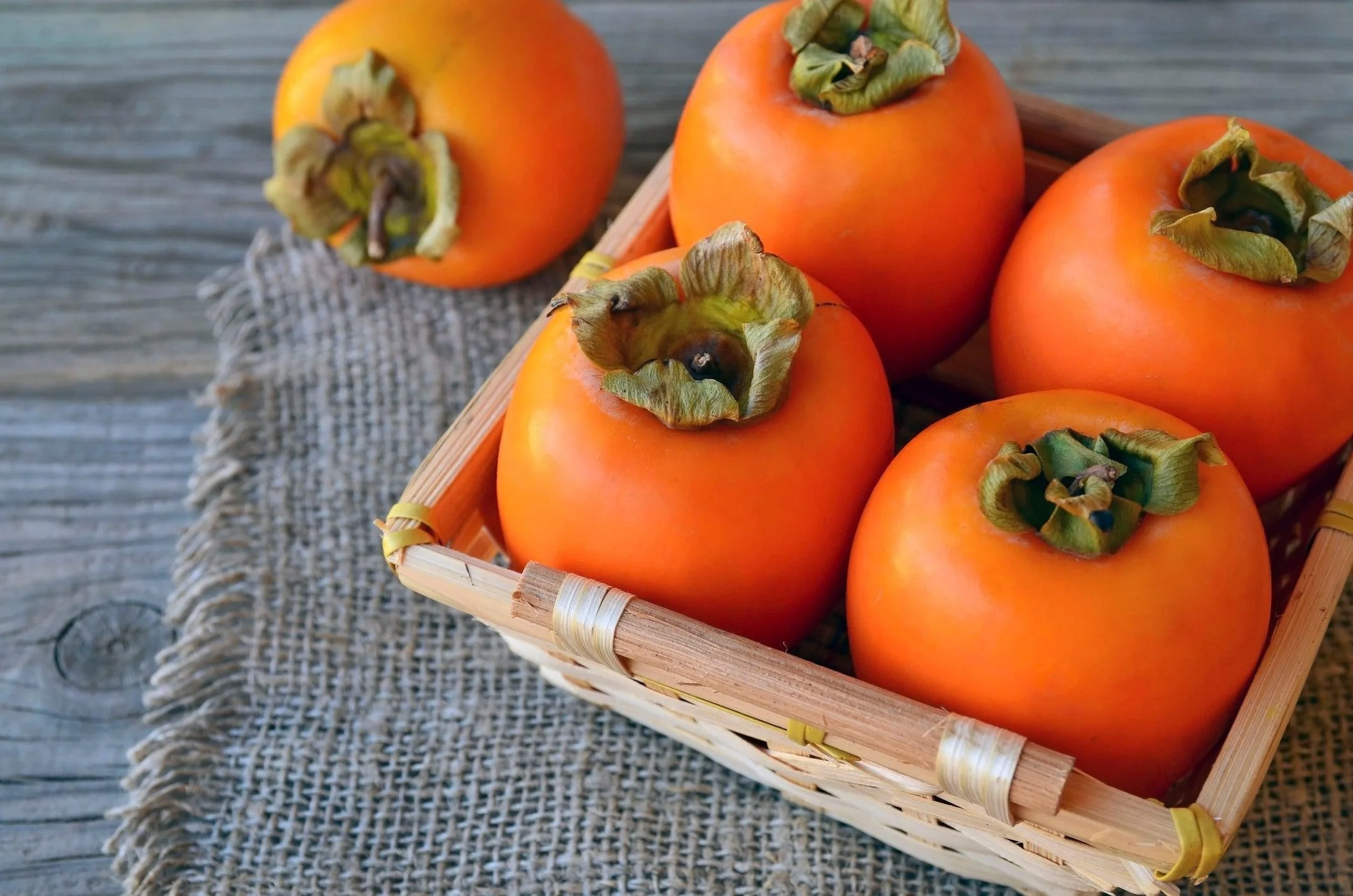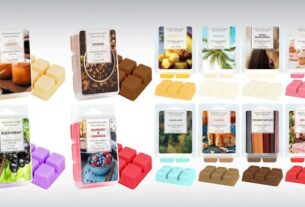Persimmons, often overlooked in the fruit world, are a delicious and nutritious addition to your diet. In this guide, we’ll explore what persimmons are, their health benefits, how to select and store them, and various ways to enjoy them. Let’s dive into the world of persimmons and discover why they should become a staple in your kitchen.
What Are Persimmons?
Persimmons are a type of fruit that come in a variety of shapes, sizes, and flavors. The most common types are the astringent and non-astringent varieties. Astringent persimmons, like the Hachiya, are high in tannins and must be fully ripe before eating. Non-astringent persimmons, like the Fuyu, can be eaten while still firm. Both types offer unique flavors and can be used in various culinary applications.
Health Benefits of Persimmons
Rich in Nutrients
Persimmons are packed with essential vitamins and minerals. They are an excellent source of vitamin A, which is crucial for eye health, and vitamin C, which boosts the immune system. Additionally, persimmons provide dietary fiber, which aids in digestion, and potassium, which helps maintain healthy blood pressure levels.
Antioxidant Properties
Persimmons contain powerful antioxidants, such as beta-carotene, lutein, and zeaxanthin, which help protect the body against oxidative stress and reduce the risk of chronic diseases. These antioxidants are particularly beneficial for maintaining healthy vision and skin.
Heart Health
Including persimmons in your diet can promote heart health. The fruit’s high fiber content helps lower bad cholesterol levels, while its potassium content aids in regulating blood pressure. The antioxidants in persimmons also contribute to reducing inflammation, a key factor in heart disease.
How to Select and Store Persimmons
Choosing the Right Persimmon
When selecting persimmons, consider their type and intended use. For immediate consumption, choose firm Fuyu persimmons. If you prefer a sweeter, softer texture, select Hachiya persimmons and allow them to ripen fully before eating. Look for persimmons that are bright in color and free of blemishes or bruises.
Storing Persimmons
Store unripe persimmons at room temperature until they ripen. Once ripe, they can be stored in the refrigerator to prolong their freshness. If you have a surplus of ripe persimmons, consider freezing them for later use. Simply peel and slice the fruit, then place the pieces in a single layer on a baking sheet. Once frozen, transfer them to an airtight container or freezer bag.
How to Enjoy Persimmons
Eating Fresh
Fresh persimmons can be enjoyed as a healthy snack. Simply wash the fruit, remove the calyx (the leafy top), and slice or bite into the flesh. For a refreshing treat, try adding persimmon slices to a fruit salad or yogurt.
Cooking with Persimmons
Persimmons can be used in various recipes, both sweet and savory. Here are some ideas:
- Persimmon Salad: Combine sliced persimmons with mixed greens, nuts, and cheese for a flavorful salad. Drizzle with a light vinaigrette for added zest.
- Persimmon Salsa: Dice persimmons and mix with chopped onions, jalapeños, cilantro, and lime juice for a unique salsa. Serve with chips or as a topping for grilled fish or chicken.
- Persimmon Smoothie: Blend persimmon pulp with yogurt, honey, and a splash of orange juice for a nutritious smoothie.
- Baked Goods: Add persimmon puree to muffins, breads, and cakes for a moist, sweet flavor. Persimmon cookies and puddings are also popular treats.
Preserving Persimmons
If you have an abundance of persimmons, consider preserving them for later use. Here are some methods:
- Drying: Slice persimmons and dry them using a dehydrator or oven. Dried persimmons make a tasty, portable snack.
- Jam and Jelly: Cook persimmons with sugar and lemon juice to make homemade jam or jelly. These spreads are perfect for toast or as a glaze for meats.
- Canning: Preserve persimmon slices in syrup or puree them and can for future use in recipes.
How to Incorporate Persimmons into Your Diet
Breakfast
Start your day with a burst of flavor by adding persimmons to your breakfast. Top your cereal or oatmeal with sliced persimmons, or blend them into your morning smoothie. You can also bake persimmon muffins or bread for a delicious breakfast treat.
Lunch and Dinner
Persimmons can be a unique addition to your lunch or dinner. Add sliced persimmons to your salads or use them as a topping for sandwiches and wraps. For dinner, try incorporating persimmons into your main dishes. They pair well with meats like pork and chicken, and can be used in sauces, glazes, and salsas.
Snacks and Desserts
Persimmons make a great snack on their own, but they can also be transformed into delightful desserts. Bake persimmon cookies, make a persimmon pudding, or create a persimmon tart. Dried persimmons are a convenient snack, and persimmon jam can be spread on crackers or used as a filling for pastries.
How to Grow Persimmons
Choosing a Variety
If you’re interested in growing your own persimmons, start by choosing the right variety for your climate. Some popular varieties include:
- Hachiya: Known for its astringent properties, Hachiya persimmons must be fully ripe before eating.
- Fuyu: A non-astringent variety, Fuyu persimmons can be eaten while still firm.
- American Persimmon: Native to the United States, this variety is smaller and has a distinct flavor.
Planting and Care
Persimmon trees prefer well-drained soil and full sun. Plant your tree in a location with plenty of space, as they can grow quite large. Water the tree regularly, especially during dry periods, and fertilize annually with a balanced fertilizer. Prune the tree in late winter to remove dead or diseased branches and to shape the tree.
Harvesting
Persimmons are typically harvested in the fall. For non-astringent varieties like Fuyu, pick the fruit when it is fully colored and still firm. For astringent varieties like Hachiya, wait until the fruit is soft and jelly-like. Use pruning shears to cut the fruit from the tree, leaving a short stem attached. You can also read The Credit National Assist: What You Need to Know
How to Use Persimmons in Traditional Dishes
Asian Cuisine
Persimmons are popular in many Asian cuisines. In Japan, they are often dried (known as hoshigaki) and enjoyed as a traditional snack. In Korea, persimmons are used to make a sweet punch called sujeonggwa. You can also find persimmons in Chinese cuisine, where they are used in desserts and savory dishes alike.
Holiday Recipes
Persimmons can add a festive touch to your holiday meals. Use them in stuffing for your Thanksgiving turkey or add them to a Christmas fruitcake. Persimmon bread and cookies are also popular holiday treats.
How to Preserve Persimmons
Freezing Persimmons
Freezing is a great way to preserve persimmons for later use. To freeze persimmons, peel and slice the fruit, then place the slices on a baking sheet and freeze until solid. Transfer the frozen slices to an airtight container or freezer bag. Frozen persimmons can be used in smoothies, baked goods, and more.
Making Persimmon Jam
Persimmon jam is a delicious way to enjoy the fruit year-round. To make persimmon jam, combine ripe persimmon pulp with sugar and lemon juice in a pot. Cook over medium heat until the mixture thickens, then pour into sterilized jars and seal. Store the jam in the refrigerator or process in a water bath for longer shelf life.
How to Avoid Common Problems with Persimmons
Astringency
Astringency is a common issue with certain varieties of persimmons. To avoid the unpleasant mouthfeel, make sure to let astringent persimmons ripen fully before eating. You can also try freezing the fruit and thawing it to reduce astringency.
Pests and Diseases
Persimmon trees can be susceptible to pests and diseases. Common pests include scale insects and mealybugs, while diseases such as leaf spot and root rot can also affect the trees. Regularly inspect your tree for signs of pests and treat with appropriate insecticides or fungicides as needed. Ensure good air circulation and proper watering to prevent diseases.
How to Enjoy Persimmons in Beverages
Persimmon Smoothies
Persimmons make a great addition to smoothies. Blend persimmon pulp with yogurt, honey, and a splash of orange juice for a refreshing drink. You can also add other fruits like bananas or berries for added flavor.
Persimmon Cocktails
For a unique cocktail, try making a persimmon margarita. Combine persimmon puree with tequila, lime juice, and a touch of agave syrup. Shake with ice and strain into a glass for a delicious, seasonal drink.
How to Use Persimmon Leaves
Persimmon leaves are often overlooked but can be used in various ways. Dried persimmon leaves can be brewed into a tea that is rich in antioxidants and has a mild, pleasant flavor. You can also use fresh leaves to wrap food, similar to how grape leaves are used in Mediterranean cuisine.
Conclusion
Persimmons are a versatile and nutritious fruit that can be enjoyed in many ways. Whether you eat them fresh, cook with them, or preserve them for later use, persimmons offer a unique flavor and numerous health benefits. By incorporating persimmons into your diet, you can enjoy a delicious fruit while reaping its many advantages. So next time you see persimmons.




